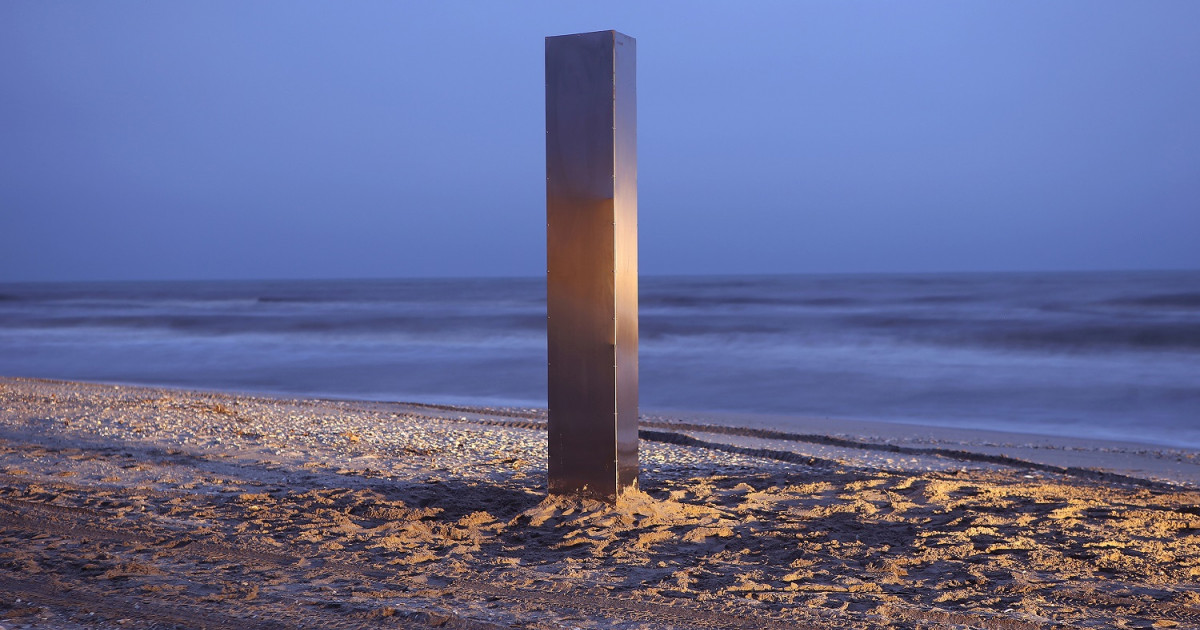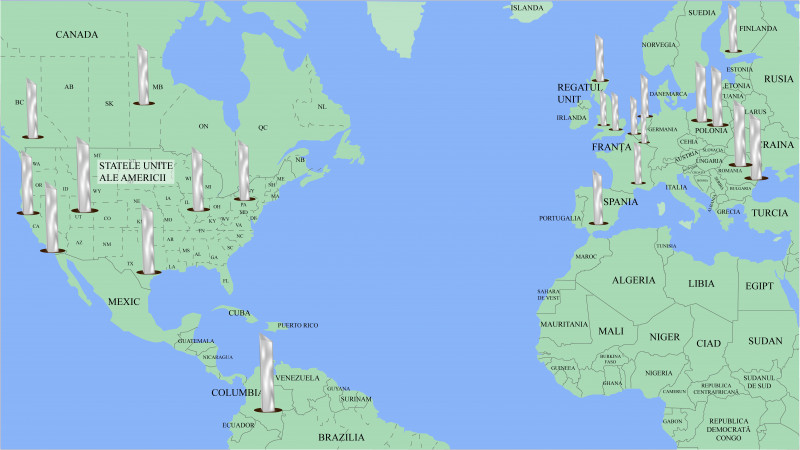
[ad_1]
Three weeks have passed since the discovery of the first monolith in the American desert of Utah, and since then dozens of other metal structures have continued to appear in all corners of the world, including Romania. Mysteries and questions have been created around them, but the explanation for the appearance and disappearance of these structures seems extremely prosaic.
It seems to be just the beginning, given that the last monolith was discovered the other day in the eastern Finnish town of Savonlinna, according to USA Today. He appeared on December 10 on a hill overlooking Olavinlinna Castle. Unsurprisingly, the locals have no idea how mysteriously the metal pillar came to their city.
From the first monolith found in the middle of the desert to the newly discovered ones, all the structures are similar: there are columns of silver metal with three sides, of various sizes, that appear mysteriously in cities or in the middle of the desert in every corner of the planet. they disappear in the same way.

Here’s when and where the metal monoliths that made headlines around the world were discovered:
November 18th– The first metal monolith was discovered in the middle of the American desert of Utah. Officers from the Utah Department of Public Safety aviation bureau were in a helicopter when they noticed the glowing object stuck to the ground.
November 23– Information about the metallic monolith of the desert has been made public. Since then, the topic has sparked many debates about their appearance: do they belong to aliens or to artists? During this time, some artists appropriated credits for metal objects.
November 27– The Utah monolith has mysteriously disappeared. Later, images appeared in the public space with four individuals who dismantled the metal structure, put it in a wheelbarrow and transported it to an unknown place.
November 28– The second monolith was discovered, this time in Romania. The metal object was found on the Bâtca Doamnei hill in Piatra Neamț and was covered by circular posters that appeared to be made with bending.
December 1st– The monolith in Romania disappeared as mysteriously as it appeared.
December 2nd– Another monolith was discovered in Atascadero, California. A day later, it disappeared and a cross appeared in its place.
December 3– Another metallic object, this time smaller, was discovered in Fayetteville, a city in North Carolina.
December 5th– Four boys get credit for erecting the Atascadero monolith. This was the first time that someone took responsibility for the mysterious objects. The four were filmed while dismantling the metal structure and uploading the video to YouTube. On the same day another monolith appears in Joshua Tree Park in California and the images with it are uploaded to an Instagram account.
6th of December– A new monolith appears in Santa Clarita, California and disappears as fast as it appeared the same day.
Also on December 6, another metal object appears in front of a candy store in Pittsburgh, but this time without any mystery: The monolith was intentionally placed to urge people to support local small businesses.
December 7th– Two other similar metal structures have been discovered, one on the Isle of Wight in the UK and the other in the Los Padres Forest in California.
December 8– The second monolith in Romania also appeared, this time on a wild beach in Vadu, Constanța county.
Also on the same day, another metal monolith was discovered in El Paso, Texas, which disappeared the same day.
December 10– A new monolith is found in the city of Savonlinna in eastern Finland.
Mysterious metal objects have become a topic of global interest and your list certainly won’t stop here.
Disperse a spell
Unsurprisingly, the mystery of the monoliths requires an explanation. All kinds of hypotheses were circulated, from the hand of the famous street artist Banksy, to the intervention of an extraterrestrial civilization. However, an article published in The Guardian claims that we are in fact witnessing a planetary farce.
“Certainly (the monoliths – no) are a global distraction at the end of a miserable year. But, as with the Banksy appearances, we are all part of the joke. There is even speculation that Banksy is behind the monoliths.” writes the author of the article.
It would be ironic if these structures were the work of an extraterrestrial intelligence trying to establish contact with us, and we are so fed up with sci-fi scenarios and clichés that we see the situation as a staging.
The similarities between these monoliths and those in Stanley Kubrick’s Space Odyssey are the most obvious proof that the structures are man-made, says the author of The Guadian. The monolith that appeared on the Isle of Wight appears to be placed on a wooden support and is made of plastic plates that reflect like a mirror. Additionally, an association called The Most Famous Artist claims to own the monoliths in Utah and California and is offering replicas of the structures for sale at a price of $ 45,000.
It’s a shame to see a magic trick revealed in a year when it would be good for us to believe in magic, writes The Guardian. Because the discovery of the first monolith, on November 18, in the deserts of Utah, was something completely strange. The structure was far from the nearest human settlement or hiking trails and is suspected to have been there, unnoticed, for a long time, as it was located in the summer of 2016. So a very patient artist left the monument unnoticed for several years, until it was discovered by chance.
But those who took it from there were probably art critics and therefore expressed their aesthetic opinion. Because that is the great weakness of monolithic art. It looks good, with its fine, shiny surfaces that reflect nature, but there is something wrong with placing a metal or plastic object in the middle of nature: it is not a strange mystery, it is human contamination.
Editor: Ioana Coman